#Wireless Signal Enhancer
Explore tagged Tumblr posts
Text








#12dBi Outdoor Antenna#3G 4G LTE Network Antenna#4g antenna for home#4G Router External Antenna#best wifi network range extender#Broadband Signal Amplifier#High-Gain 360° Antenna#NETBOON External Antenna#Omni Antenna for Rural Areas#Omni-Directional LTE Antenna#Outdoor Wi-Fi Antenna#Signal Booster Antenna for Routers#wifi range extender antenna#Wireless Signal Enhancer
0 notes
Text

For the Benefit of All: Assistive Tech Developed from NASA Tech
What do modern cochlear implants and robotic gloves have in common? They were derived from NASA technology. We’ve made it easier to find and use our patented inventions that could help create products that enhance life for people with disabilities.
October is National Disability Employment Awareness Month, which highlights the contributions of American workers with disabilities – many of whom use assistive technology on the job. Take a look at these assistive technologies that are NASA spinoffs.
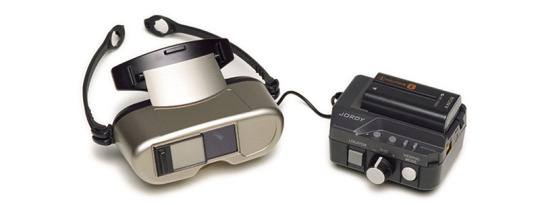
Low-Vision Headsets
The Joint Optical Reflective Display (JORDY) device is a headset that uses NASA image processing and head-mounted display technology to enable people with low vision to read and write. JORDY enhances individuals’ remaining sight by magnifying objects up to 50 times and allowing them to change contrast, brightness, and display modes. JORDY's name was inspired by Geordi La Forge, a blind character from “Star Trek: The Next Generation” whose futuristic visor enabled him to see.

Cochlear Implants
Work that led to the modern cochlear implant was patented by a NASA engineer in the 1970s. Following three failed corrective surgeries, Adam Kissiah combined his NASA electronics know-how with research in the Kennedy Space Center technical library to build his own solution for people with severe-to-profound hearing loss who receive little or no benefit from hearing aids. Several companies now make the devices, which have been implanted in hundreds of thousands of people around the world.

Robotic Gloves
Ironhand, from Swedish company Bioservo Technologies, is the world’s first industrial-strength robotic glove for factory workers and others who perform repetitive manual tasks. It helps prevent stress injuries but has been especially warmly received by workers with preexisting hand injuries and conditions. The glove is based on a suite of patents for the technology developed by NASA and General Motors to build the hands of the Robonaut 2 humanoid robotic astronaut.

Smart Glasses
Neurofeedback technology NASA originally developed to improve pilots’ attention has been the basis for products aimed at helping people manage attention disorders without medication. The devices measure brainwave output to gauge attention levels according to the “engagement index” a NASA engineer created. Then, they show the results to users, helping them learn to voluntarily control their degree of concentration. One such device is a pair of smart glasses from Narbis, whose lenses darken as attention wanes.

Anti-Gravity Treadmills
A NASA scientist who developed ways to use air pressure to simulate gravity for astronauts exercising in space had the idea to apply the concept for the opposite effect on Earth. After licensing his technology, Alter-G Inc. developed its anti-gravity G-Trainer treadmill, which lets users offload some or all of their weight while exercising. The treadmills can help people recover from athletic or brain injuries, and they allow a safe exercise regimen for others with long-term conditions such as arthritis.
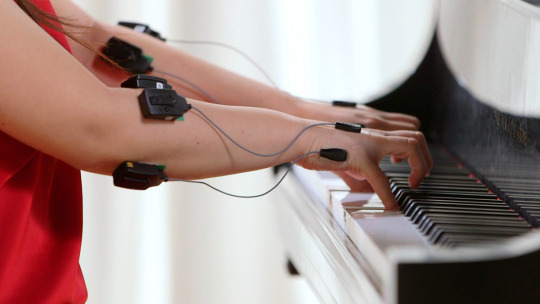
Wireless Muscle Sensors
Some of the most exciting assistive technologies to spin off may be yet to come. Delsys Inc. developed electromyographic technology to help NASA understand the effects of long-term weightlessness on astronauts’ muscles and movements. Electromyography detects and analyzes electrical signals emitted when motor nerves trigger movement. Among the company’s customers are physical therapists developing exercise routines to help patients recover from injuries. But some researchers are using the technology to attempt recoveries that once seemed impossible, such as helping paralyzed patients regain movement, letting laryngectomy patients speak, and outfitting amputees with artificial limbs that work like the real thing.
To further enhance the lives of people with disabilities, NASA has identified a selection of patented technologies created for space missions that could spur the next generation of assistive technology here on Earth.
Want to learn more about assistive technologies already in action? Check out NASA Spinoff to find products and services that wouldn’t exist without space exploration.
Make sure to follow us on Tumblr for your regular dose of space!
#NASA#space#tech#technology#spinoff#robotics#physical therapy#disability#disabled#accessibility#a11y#inventions
844 notes
·
View notes
Text
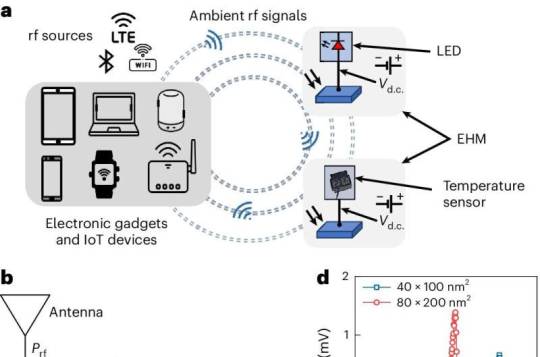
Battery-free technology can power electronic devices using ambient radiofrequency signals
Ubiquitous wireless technologies like Wi-Fi, Bluetooth, and 5G rely on radio frequency (RF) signals to send and receive data. A new prototype of an energy harvesting module—developed by a team led by scientists from the National University of Singapore (NUS)—can now convert ambient or "waste" RF signals into direct current (DC) voltage. This can be used to power small electronic devices without the use of batteries. RF energy harvesting technologies, such as this, are essential as they reduce battery dependency, extend device lifetimes, minimize environmental impact, and enhance the feasibility of wireless sensor networks and IoT devices in remote areas where frequent battery replacement is impractical. However, RF energy harvesting technologies face challenges due to low ambient RF signal power (typically less than -20 dBm), where current rectifier technology either fails to operate or exhibits a low RF-to-DC conversion efficiency. While improving antenna efficiency and impedance matching can enhance performance, this also increases on-chip size, presenting obstacles to integration and miniaturization.
Read more.
43 notes
·
View notes
Text
by Suzanne Burdick, Ph.D.
Wireless radiation could be used to surveil people without their knowledge or consent, even if they aren’t wearing a “smart” device or holding a cellphone, according to the authors of a new study.
The study authors — engineering faculty members with the Institute for Systems and Computer Engineering, Technology and Science at the University of Porto, Portugal — posted their report Jan. 24 on the Cornell University open-access research website, arXiv.
The study showcases hardware the authors designed that leveraged ambient wireless radiofrequency (RF) radiation to detect and render a visual image of human activity — such as waving a hand or a person’s breathing rate — with over 90% accuracy.
Their design involved a thin programmable surface — a Reconfigurable Intelligent Surface (RIS) — that communicates with computers and artificial intelligence (AI).
RIS can manipulate and steer Wi-Fi signals in controlled ways, explained Fariha Husain, manager of Children’s Health Defense’s (CHD) Electromagnetic Radiation (EMR) & Wireless Program. “By adjusting how radio waves reflect off this surface, the researchers were able to enhance signal-sensitivity and improve their ability to detect subtle human movements.”
15 notes
·
View notes
Text
Just a few public "Mind Control" projects. MKULTRA
"Military Funds Brain-Computer Interfaces to Control Feelings" https://www.technologyreview.com/s/527561/military-funds-brain-computer-interfaces-to-control-feelings/
US military successfully tests electrical brain stimulation to enhance staff skills https://www.theguardian.com/science/2016/nov/07/us-military-successfully-tests-electrical-brain-stimulation-to-enhance-staff-skills
Wireless magnetothermal deep brain stimulation http://science.sciencemag.org/content/early/2015/03/11/science.1261821?sid=53443da4-1e9c-4321-b54e-c142179e9294
MIT Researchers Develop Wireless, Noninvasive Deep Brain Stimulation Approach https://www.meddeviceonline.com/doc/mit-researchers-develop-wireless-noninvasive-deep-brain-stimulation-approach-0001
Dark past of deep-brain stimulation https://www.nature.com/articles/d41586-018-02963-6
Watch your tone
Voice-analytics software helps customer-service reps build better rapport with customers. http://news.mit.edu/2016/startup-cogito-voice-analytics-call-centers-ptsd-0120
Mind control: Scientists can now make people alter their prejudices and belief in God https://www.ibtimes.co.uk/mind-control-scientists-can-now-make-people-alter-their-prejudices-belief-god-1524122
Mind Control by Cell Phone
Electromagnetic signals from cell phones can change your brainwaves and behavior https://www.scientificamerican.com/article/mind-control-by-cell/
Washington State Fusion Center accidentally releases records on remote mind control
As part of a request for records on Antifa and white supremacist groups, WSFC inadvertently bundles in “EM effects on human body.zip” https://www.muckrock.com/news/archives/2018/apr/18/fusion-center-em/
Nervous system manipulation by electromagnetic fields from monitors https://patents.google.com/patent/US6506148
#5th generation warfare#deep state#shadow government#domestic terrorism#mk ultra#strategy of tension
14 notes
·
View notes
Text
Project Metamorphosis was the Space Pirates' way of preserving their commanders, keeping them alive through technology, and most importantly, keeping them operational; With cybernetics, any leader would be able to continue leading the Space Pirates in both tactics and even battle, no matter how damaged their organic bodies were.
Those submitted to the process were Space Pirate commanders injured by Samus Aran during her first assault on Zebes; Ridley, Kraid, and Weavel. Kraid was given a cybernetic dome over his face in order to protect his recovering eyes and see for them, but otherwise his adjustments were minimal. Ridley replaced a good portion of his body, and Weavel? He ended up replacing everything except his brain and spinal cord, much to his chagrin; His injuries were much more extensive, and unlike Ridley, he lacked any regenerative abilities.
But Project Metamorphosis was not just about giving Space Pirates cybernetic prosthetics; It went further than this. Hence, Mecha Ridley; At first glance, it seems to just be a robotic doppelganger of Ridley. And indeed, one of its functions was to act as a complete set of cybernetic prosthetics for the Space Pirate, meant to represent any possible limb or organ he might lose. This is quite common as a medical practice, although the full set of prostheses being programmed to attack intruders on their own isn't...
If Ridley were to lose an arm, an arm would be taken from the mecha and applied to Ridley's injured stump. If his face was burnt off, the skull chassis would act as a mask. Fire-breathing organs could be substituted with an internal flamethrower. The modular nature of Mecha Ridley meant that if Ridley replaced his hand, only to lose the rest of the arm it was connected to, the arm taken from his Mecha counterpart could still reconnect with the robotic hand he was currently using. In essence, Mecha Ridley was the precursor to the Meta and Proteus frames, hence the missile-launching booster as less a replacement and more an enhancement.
But Mecha Ridley had another function as well; Acting as a machine with which Ridley could project his own thoughts into, and control from afar. For in order to move the body, the brain sends signals through the nervous system, which the limbs and organs receive, and then interpret to move accordingly.
These signals are electric in nature; And so are wireless signals in technology. Through Project Metamorphosis, a neural interface could be applied to Ridley's head, and receive the signals he'd attempt to send to the rest of his body, replicating and redirecting them to his robotic doppelganger. Mecha Ridley would receive his brain's signals instead, and as a result its mimicry of Ridley's limbs would move, while his actual arms -if they were even present- would not do anything.
Mecha Ridley would also absorb visual and auditory input, directing it to Ridley, who would receive it via a VR headset. It's like a simulation, except your ‘avatar’ is in fact a tangible replica acting elsewhere. This feature is useful if Ridley or any other commander is so damaged that they can't even function on the field as a cyborg. In Ridley's particular case, it's to give his true body room to regenerate without having to worry about cybernetics restricting cellular repair, while also allowing him to fight 'on the field'. It's the best of both worlds.
...The problem with this form of cybernetic projection/possession is something every gamer fears; A bad connection. The Space Pirates worked to perfect the bandwidth of Ridley's neural headset and his mecha. But if Samus were to find herself unable to destroy a fully-completed Mecha Ridley, she could get around the problem entirely by interfering with the signals, causing the mecha to move one step behind Ridley, while Ridley received its input too late.
In case of this scenario, the Space Pirates programmed Mecha Ridley with its own independent AI to control itself with, should it stop receiving reliable input from Ridley in the heat of battle. So when Samus encountered it aboard the mothership, despite not being complete, Mecha Ridley still had a functioning AI to attack Samus with. Because this encounter happened so quickly after Ridley's defeat in Norfair, he hadn’t yet been resuscitated and hooked up to the neural interface. But in a future scenario, where Mecha Ridley was rebuilt and actually completed, it might've been something Ridley begrudgingly used while recovering from Phazon withdrawal and atrophy after the destruction of Phaaze.
Otherwise, he would avoid it if he could, and even subject himself to painful cybernetics as necessary; Ridley did not appreciate having a machine clumsily interpret his own moves for him. It was a distant, out of body experience, when Ridley preferred to fight in-person and experience death and destruction through his actual senses. Nevertheless, he kept the mecha on his personal ship; In Ridley’s off-time, he would put on the headset and test controlling the machine, so science team could see how to sync the mecha to his brain signals.
Since Project Metamorphosis could help Space Pirate commanders 'transcend the body', this same principle was applied to Meta Weavel. Despite Weavel being a Zebesian, his mechanical frame ended up having a noticeably different form, more upright and humanoid. The idea was to build off of Mecha Ridley by seeing how a brain could acclimate to a body very different to the one it was programmed to control. Hence the project’s name invoking the natural process of transformation and rebirth into something radically different; After a vulnerable workshopping period, of course.
Despite Weavel's frustrations over the differences, he did eventually adapt, and his Meta frame proved to be of sufficient quality. Thus, Meta Weavel would be deemed a success; It showed potential for brains to adapt to a wider variety of foreign shapes. So for example, a humanoid brain could be made to operate an arachnid body. Or a serpentine brain could now handle a body with several limbs, when such a brain wouldn’t even have neural pathways for this.
But the cybernetics could be made to interpret and ‘translate’ the brain’s signals, meant for a different body, into movements corresponding to limbs not alike. There have already been implants that translate the pheromones of species that communicate via smell into sound, and vice-versa, to aid in cross-species interaction; All of this is the natural extension, the natural evolution, of such technology. The Space Pirates would have to test more extreme examples like these, intensifying the disparity with each success.
And the goal was to combine these results with that of Mecha Ridley, to create technology in which a Space Pirate could telepathically control and 'possess' a mechanical body wildly different than their own. Project Metamorphosis would be taken even further from there; Perhaps being used to upload minds into machinery, allowing them to interface with data and become it, etc.
It could even lead to a telepathic possession and control of technology, with Mother Brain already being this; In fact, she helped form the inspiration for Mecha Ridley (so in a way, Zero Mission’s final boss is a culmination of Mother Brain, Ridley, and Weavel’s command). During her stint as Space Pirate leader, she permitted some study of her schematics by Project Metamorphosis scientists.
They analyzed Mother’s power to telepathically control both machines and even living organisms, in the hopes of replicating this with headsets and corresponding receivers; Science team hoped in particular to implant receivers into anyone or anything, without needing permission. Imagine hijacking a body by cutting off the signals from its host brain, so it would instead receive signals from another remote brain entirely.
Imagine bypassing the need to implant physical receivers entirely, and just using brainwaves and telepathy to disrupt a body’s natural signals and replace them at will! Imagine replacing them selectively to brainwash someone, letting them handle the rest as they obey and interpret on their own a basic command, freeing up brainpower to use in other processes or thralls!
All of this is how Mother Brain’s telepathic control works; It enabled her to control the Metroids, especially since she possessed Chozo DNA that the larvae were still programmed to obey. And it helped Mother Brain take command of technology as she saw fit, even sometimes controlling her Chozo charges for them so they could just let their minds and wills rest.
It allowed Mother to influence Zebes’ ecosystem and make it hostile to all outsiders. Her job has always been to do the thinking for people, after all; She is their new brain. Mecha Ridley is just the natural evolution of cybernetics interpreting for regular body parts the brain’s signals; Mother Brain’s conquest is just the natural evolution of her own programming, which she hijacked for herself to no longer be made to control, but to control under her own volition.
18 notes
·
View notes
Text
Wifi Extender
Looking for a reliable WiFi extender or WiFi booster to eliminate dead zones and improve connectivity? Explore a wide range of smart range extenders, router boosters, and wireless repeaters at Ener-J. Whether you're working from home, streaming in HD, or gaming online, our Wi-Fi range extenders ensure faster and more stable connections across every corner of your space. Easy setup, Wide compatibility, Enhanced signal coverage, Shop now:
2 notes
·
View notes
Text

DARPA Brain Technologies: Electrical Prescriptions (ElectRx) This is some pretty old tech source. Wonder what kind of psychedelics though? The ElectRx program aims to help the human body heal itself through neuromodulation of organ functions using ultraminiaturized devices, approximately the size of individual nerve fibers, which could be delivered through minimally invasive injection.
Neural Engineering System Design (NESD) Looks like they're beating Elon to the punch here. The NESD program aims to develop an implantable neural interface able to provide unprecedented signal resolution and data-transfer bandwidth between the brain and the digital world.
Next-Generation Nonsurgical Neurotechnology (N3) The N3 program aims to develop a safe, portable neural interface system capable of reading from and writing to multiple points in the brain at once. Whereas the most advanced existing neurotechnology requires surgical implantation of electrodes, N3 is pursuing high-resolution technology that works without the requirement for surgery so that it can be used by able-bodied people.
Six Paths to the Nonsurgical Future of Brain-Machine Interfaces
Nonsurgical Neural Interfaces Could Significantly Expand Use of Neurotechnology Targeted Neuroplasticity Training (TNT) Matrix Shit The TNT program seeks to advance the pace and effectiveness of cognitive skills training through the precise activation of peripheral nerves that can in turn promote and strengthen neuronal connections in the brain. TNT will pursue development of a platform technology to enhance learning of a wide range of cognitive skills, with a goal of reducing the cost and duration of the Defense Department’s extensive training regimen, while improving outcomes.
Neuro Function, Activity, Structure and Technology (Neuro-FAST) The Neuro-FAST program seeks to enable unprecedented visualization and decoding of brain activity to better characterize and mitigate threats to the human brain, as well as facilitate development of brain-in-the loop systems to accelerate and improve functional behaviors. The program has developed CLARITY, a revolutionary tissue-preservation method, and builds off recent discoveries in genetics, optical recordings and brain-computer interfaces. Restoring Active Memory (RAM) The RAM program aims to develop and test a wireless, fully implantable neural-interface medical device for human clinical use. The device would facilitate the formation of new memories and retrieval of existing ones in individuals who have lost these capacities as a result of traumatic brain injury or neurological disease.
19 notes
·
View notes
Text
What is the mechanism behind RFID hotel key cards?
In the modern hospitality industry, enhancing guest experience and operational efficiency is a core goal for every hotel manager. With advancements in technology, RFID (Radio Frequency Identification) has become an essential tool in hotel management. Particularly in the application of hotel key cards, RFID technology has brought unprecedented transformations. RFID hotel key cards not only simplify the check-in and check-out processes but also provide enhanced security, significantly improving guest convenience and overall satisfaction. How does RFID technology make all this possible? What is its working principle? This is a common curiosity among hotel managers, and today, we will explore this topic.

1. The Working Principle of RFID Hotel Key Cards
Before delving into how RFID hotel key cards work, let’s briefly introduce what RFID technology is.
What is RFID Technology?
RFID technology facilitates the exchange of information between objects through radio waves. It employs a tag and a reader for contactless data transmission, eliminating the need for physical contact. Users can simply bring an RFID card close to the reading device, and data will automatically transfer to complete authorization, authentication, or operations.
RFID hotel key cards are a type of RFID tag that connects with the hotel lock system via an RFID reader installed on the door lock, enabling contactless identity authentication and unlocking functions. Each card contains a tiny embedded chip that can store encrypted data such as the guest's room number, validity period, and access permissions. When a guest approaches the door lock with their card, the RFID reader communicates with the card via electromagnetic waves, retrieves the stored information, and decides whether to unlock the door based on pre-set security rules.
How RFID Cards Interact with Hotel Lock Systems
The interaction between RFID cards and hotel lock systems is grounded in simple, efficient wireless communication. In this process, the embedded chip within the RFID card contains a unique ID number, which is decoded by the RFID reader upon receiving a signal. Here’s a breakdown of the specific workflow:
Signal Emission: When the RFID card nears the lock system, the RFID reader within the lock emits an electromagnetic signal, activating the chip in the card.
Data Transmission: The chip in the card transmits its stored ID information to the reader, which then compares this information against the hotel management system.
Authentication and Authorization: If the card information matches the records in the system and the access validation is successful, the door lock will unlock, granting the guest entrance to their room.
The contactless feature of RFID technology makes the hotel check-in process smoother and more convenient, as guests don’t have to insert the card or physically manipulate a key, significantly enhancing the overall fluidity and experience of entering the hotel room.
Additionally, RFID cards offer heightened security. Compared to traditional magnetic stripe cards, the data transmission of RFID cards employs more complex encryption algorithms, making it harder to copy or tamper with information, thus providing greater security for hotels.
Through this series of simple and efficient operations, RFID hotel key cards not only ensure guest convenience but also significantly enhance hotel operational efficiency and security.
2. Advantages of RFID Hotel Key Cards
The introduction of RFID hotel key cards offers significant advantages to hotels, enhancing not only security but also customer experience and operational efficiency.
Enhanced Security
RFID cards utilize encrypted data transmission and unique chip designs to prevent card information from being copied or hacked. They can also be configured with specific validity periods and access permissions, ensuring that rooms can only be accessed within authorized times, thereby reducing the risk of unauthorized entry. Many five-star hotels have effectively improved room security and protected customer privacy through such solutions.
Improved Customer Experience
RFID cards streamline the check-in and check-out processes, allowing guests to simply hold the card near their room door to unlock it automatically. This contactless operation not only enhances convenience but also reduces the risk of contact transmission, increasing guests' peace of mind.
Cost Savings in Operations
RFID technology aids hotels in automating management tasks related to rooms and keys, minimizing human errors and wasted time. The system can monitor card usage in real time, alerting staff to lost or unauthorized use of cards promptly, which improves management efficiency and lowers operational costs.
Increased Management Flexibility and Scalability
RFID technology can seamlessly integrate with other management systems, enabling hotels to expand functionality on demand, such as automated climate control or lock management. This flexibility allows hotels to respond quickly to changing demands and easily upgrade their systems.
Enhanced Brand Image and Customer Loyalty
The use of RFID cards boosts the technological appeal of the hotel, enhancing its brand image. Additionally, through RFID cards, hotels can offer personalized services, which helps increase customer loyalty.
In summary, RFID hotel key cards provide a range of advantages that contribute to a safer, more efficient, and more enjoyable experience for both guests and hotel staff. This technology is not just a trend but a valuable asset in modern hotel management.

3. Future Development of RFID Hotel Key Cards
As technology continues to advance, the application of RFID technology in the hotel industry is expected to become more widespread and intelligent.
Smarter Integrated Systems
Future RFID systems will be more tightly integrated with other intelligent systems within hotels, such as Internet of Things (IoT) devices, smart room controls, and Customer Relationship Management (CRM) systems. Through this integration, hotels can offer more personalized services, such as automatically adjusting room temperature, lighting, and other amenities based on guest preferences, thereby enhancing the customer experience and reducing energy consumption.
Enhanced Security and Encryption Technologies
As security requirements continue to grow, future RFID hotel key cards will employ more advanced encryption technologies to ensure the safety of guests' personal information and room security. With dynamic encryption and multi-factor authentication mechanisms, RFID cards will effectively defend against various cyber attacks and forgery attempts, further strengthening the security of hotel management.
Data Analytics and Personalized Services
RFID systems will evolve beyond being simple door lock management tools. In the future, they will integrate with data analytics tools to help hotels analyze guest behavior and preferences, thereby enabling more personalized services. For example, hotels could automatically push tailored offers and services based on guests’ check-in history and spending habits, enhancing customer engagement and loyalty.
In summary, the future of RFID hotel key cards promises to be more intelligent, secure, and personalized, transforming the hospitality experience and paving the way for a new era in hotel management. As these technologies develop, they will not only improve operational efficiency but also create a more satisfying experience for guests.
4. RFID Hotel Key Cards: The Key to Enhanced Hotel Management Efficiency and Customer Experience
Through contactless, efficient, and secure solutions, RFID hotel key cards not only provide guests with a more convenient and safe check-in experience but also enhance operational efficiency and reduce costs for hotels.
As technology continues to advance, RFID systems will become increasingly intelligent and integrated, with a stronger focus on security and data analytics functions. Whether through integration with smart room control systems or the fusion of mobile devices with RFID cards, future RFID technology will bring even more innovative opportunities to the hospitality industry.
However, to ensure the successful deployment of RFID systems and maximize business value, choosing an appropriate RFID vendor is crucial. With over a decade of deep experience in RFID technology, many hotel managers have achieved intelligent upgrades and heightened management efficiency through our customized RFID solutions, providing guests with an unparalleled stay.
If you are interested in the RFID hotel key card system or want to know more about solutions for improving hotel management efficiency, please feel free to contact us. Our RFIDCard.com professional team is ready to provide you with free consultation and testing services to ensure you select the RFID products and systems that best meet your needs. Take action now, and let us help you offer your guests a safer, more convenient check-in experience while driving your hotel towards future success!
3 notes
·
View notes
Text
Steps to Resolve Orange Light on WiFi Extender
When your Belkin wifi extender orange light turns on and remains constant or blinks, it typically implies that the setup was unsuccessful or that the connection was poor. Interference from other wireless signals is a common cause of the Belkin range extender blinking orange issue. Try moving the extender or altering the router's channel. A clean connection can be restored by restarting the computer or returning it to factory settings. Additionally, confirm that the extender has the most recent firmware installed. By taking these actions, the device's performance can be much enhanced, and the persistent orange signal can be removed.
#belkin setup#belkin range extender blinking orange#belkin wifi extender orange light#belkin range extender orange light#Belkin Extender Not Working
1 note
·
View note
Text
In today's world, safety is paramount, especially when it comes to fire hazards. Fire alarm detection systems play a crucial role in safeguarding lives and property. This blog explores the various components, types, and importance of these systems.
What is a Fire Alarm Detection System?
A fire alarm detection system is designed to detect and alert occupants of a building to the presence of smoke, fire, or other hazards. These systems can vary in complexity, ranging from simple smoke detectors to sophisticated integrated systems that monitor multiple buildings.
Key Components of Fire Alarm Systems
1. Smoke Detectors: These devices sense smoke as an indicator of fire. There are two primary types:
- Ionization Detectors: More responsive to flaming fires.
- Photoelectric Detectors: Better at detecting smoldering fires.
2. Heat Detectors: These activate when a specific temperature is reached or when there’s a rapid increase in temperature.
3. Manual Pull Stations: Located throughout buildings, these allow individuals to manually signal an alarm in the event of a fire.
4. Alarm Notification Devices: This includes horns, bells, and strobe lights that alert occupants of the danger.
5. Control Panel: The brain of the system, it receives signals from detectors and activates alarms and notifications.
6. Fire Suppression Systems: Some systems integrate fire suppression technologies, such as sprinklers, to control or extinguish fires automatically.
Types of Fire Alarm Detection Systems
1. Conventional Systems: These are typically used in smaller buildings. They group detectors into zones, making it easy to locate the source of the alarm.
2. Addressable Systems: More advanced, these systems provide specific information about the location of the alarm, allowing for quicker response times.
3. Wireless Systems: Ideal for buildings where wiring is impractical, wireless systems use radio signals to communicate between detectors and the control panel.
4. Smart Fire Alarms: Integrating with IoT technology, these systems can send alerts to smartphones, providing real-time information about fire conditions.
Importance of Fire Alarm Detection Systems
- Life Safety: The primary purpose is to alert occupants early, allowing them time to evacuate safely.
- Property Protection: Early detection can minimize damage to property and assets.
- Compliance with Regulations: Many local codes and regulations require the installation of fire alarm systems in commercial and residential buildings.
- Insurance Benefits: Having a functioning fire alarm system can lower insurance premiums and provide peace of mind.
Maintenance and Testing
Regular maintenance and testing of fire alarm systems are crucial for ensuring their functionality. This includes:
- Monthly visual inspections.
- Semi-annual testing of alarm devices.
- Annual professional inspections by certified technicians.
Conclusion
Investing in a fire alarm detection system is essential for any building. Understanding the components, types, and importance of these systems can help in making informed decisions about safety measures. Prioritizing fire safety not only protects lives but also enhances the overall security of property and assets. Remember, in a fire emergency, every second counts—early detection can make all the difference.
3 notes
·
View notes
Text
Future of Energy Harvesting System Market: Innovations & Opportunities

Executive Summary: A Transformational Shift in Energy Utilization
The global energy landscape is undergoing a revolutionary transformation, driven by the rising need for sustainable power sources. Energy Harvesting System Market, which convert ambient energy into electrical energy, are at the forefront of this transition. From reducing battery dependency to enabling long-lasting power for low-energy electronics, energy harvesting is not just an innovation—it is the future of decentralized energy systems. This comprehensive analysis explores market trends, technological advancements, regional dynamics, and competitive strategies shaping the Energy Harvesting System market from 2024 to 2032.
Request Sample Report PDF (including TOC, Graphs & Tables): https://www.statsandresearch.com/request-sample/18569-global-energy-harvesting-system-market
Energy Harvesting System Market Overview: Growth Fueled by Smart Technologies and IoT
The Energy Harvesting System market is experiencing accelerated growth, propelled by the exponential expansion of the Internet of Things (IoT), wearable technology, smart buildings, and industrial automation. As power efficiency becomes a paramount concern, EHS solutions are poised to dominate in areas where battery replacement is infeasible or undesirable.
Key Energy Harvesting System Market Drivers
Escalating demand for wireless sensor networks in industrial automation
Increasing adoption of self-powered wearable electronics
Expansion of smart city infrastructure worldwide
Rising awareness of environmental sustainability
Technological breakthroughs in micro-energy sources
Get up to 30%-40% Discount: https://www.statsandresearch.com/check-discount/18569-global-energy-harvesting-system-market
Energy Harvesting System Market Segmentation by Technology Type
Light Energy Harvesting
Light—especially solar—is the most widely adopted energy harvesting source. Modern photovoltaic (PV) cells integrated into smart sensors enable continuous data transmission, particularly in outdoor and well-lit indoor environments.
Vibration Energy Harvesting
Using piezoelectric, electrostatic, and electromagnetic technologies, vibration-based systems extract energy from motion. This segment is gaining traction in transportation, manufacturing equipment, and infrastructure monitoring.
RF (Radio Frequency) Energy Harvesting
RF harvesting utilizes ambient wireless signals—Wi-Fi, cellular, and TV broadcasts—as power sources. Though it generates smaller outputs, it is ideal for ultra-low-power IoT devices.
Thermal Energy Harvesting
Thermoelectric generators convert heat gradients into electricity. These are valuable in industrial settings with consistent thermal waste, such as oil & gas and automotive sectors.
Application Analysis: Sector-Wise Adoption and Impact
Industrial Applications
The industrial sector is the largest and fastest-growing segment due to widespread use in condition monitoring, predictive maintenance, and machine-to-machine communication. Energy harvesting minimizes downtime and reduces operational costs.
Household Applications
Smart home systems—thermostats, lighting, door locks—are increasingly powered by ambient sources. Energy harvesting eliminates wiring complexity, enhances aesthetics, and prolongs product life.
Commercial Applications
In commercial buildings, EHS supports lighting controls, HVAC automation, and occupancy sensors, driving energy efficiency and compliance with green building standards.
Regional Insights: Growth Hubs and Strategic Opportunities
North America
With robust investments in smart infrastructure and industrial automation, North America leads in technological adoption. The U.S. is a prime consumer due to strong regulatory incentives and innovation hubs.
Europe
Driven by stringent environmental policies and strong R&D investment, Europe showcases rapid uptake in energy harvesting for both consumer electronics and automotive applications.
Asia-Pacific
China, Japan, and India are emerging as manufacturing powerhouses for EHS components. Government-led smart city projects and massive IoT deployment in the region bolster demand.
Competitive Landscape: Strategic Initiatives and Market Leadership
The EHS market is moderately consolidated, with innovation-focused players driving growth through partnerships, acquisitions, and proprietary technology.
Leading Energy Harvesting System Market Participants
Texas Instruments – Renowned for ultra-low-power microcontrollers and energy management ICs.
STMicroelectronics – Offers piezoelectric and thermoelectric energy harvesting kits.
Honeywell International – Specializes in industrial-grade vibration and thermal harvesters.
EnOcean GmbH – Pioneer in wireless energy harvesting solutions for building automation.
Powercast Corporation – Dominant in RF-based harvesting for commercial and consumer applications.
Investment and R&D Trends
Significant capital is being invested in miniaturization, integration, and wireless communication protocols. R&D efforts focus on increasing conversion efficiency, hybrid harvesting systems, and AI-integrated energy management.
Strategic Recommendations for Stakeholders
OEMs: Prioritize integration of hybrid harvesting systems to enhance device versatility.
Investors: Focus on companies offering scalable platforms for IoT and industrial solutions.
Policymakers: Create incentive structures to accelerate deployment in infrastructure and transportation.
Startups: Innovate in niche areas such as biomedical implants and agricultural sensors.
Energy Harvesting System Market Forecast: 2024–2032
The global Energy Harvesting System market is projected to grow at a compound annual growth rate (CAGR) exceeding 10%, reaching a multi-billion-dollar valuation by 2032. The proliferation of wireless electronics and growing sustainability mandates will drive this robust expansion.
Future Outlook: Toward a Battery-Free Ecosystem
Energy harvesting is redefining how devices interact with their environment. By enabling continuous, maintenance-free operation, EHS is laying the groundwork for a future where billions of interconnected devices operate independently of batteries. The confluence of AI, 5G, and ambient energy will define the next phase of ubiquitous computing.
Purchase Exclusive Report: https://www.statsandresearch.com/enquire-before/18569-global-energy-harvesting-system-market
Conclusion
We are at the cusp of a paradigm shift in power generation for low-energy electronics. Energy harvesting is no longer a niche technology—it is an essential enabler of the sustainable, connected future. By adopting and investing in next-generation EHS, industries and governments can future-proof operations, enhance resilience, and lead in the transition toward net-zero energy infrastructure.
Our Services:
On-Demand Reports: https://www.statsandresearch.com/on-demand-reports
Subscription Plans: https://www.statsandresearch.com/subscription-plans
Consulting Services: https://www.statsandresearch.com/consulting-services
ESG Solutions: https://www.statsandresearch.com/esg-solutions
Contact Us:
Stats and Research
Email: [email protected]
Phone: +91 8530698844
Website: https://www.statsandresearch.com
1 note
·
View note
Text
Roller Shutter & Garage Door Remotes: A Guide to Convenience, Security, and Smart Access

Gone are the days of manually lifting heavy garage doors or roller shutters. With remote control systems, opening and closing your doors is now easier, safer, and more efficient. Whether you're managing a commercial unit, industrial site, or a private garage, roller shutter and garage door remotes offer unmatched convenience and control.
In this guide, we’ll cover how these remote systems work, their benefits, common issues, and why UK Doors & Shutters is your go-to expert for supply, programming, and repairs in Bolton and throughout the North West of England.
What Are Roller Shutter and Garage Door Remotes?
Roller shutter and garage door remotes are wireless control devices that allow you to operate your doors from a distance — at the touch of a button. These remotes communicate with the door’s motor system to trigger opening or closing actions, improving both accessibility and security.
They are commonly used for:
Electric roller shutters
Sectional garage doors
High-speed doors
Automated gate systems
Types of Remote Systems
1. Single-Button Remotes
Controls one shutter or garage door
Ideal for homes and small businesses
2. Multi-Channel Remotes
Control multiple doors or gates with one remote
Useful for commercial properties, warehouses, or homes with more than one door
3. Key-Fob Remotes
Small, keyring-style devices for on-the-go use
Pre-programmed for secure, personalised access
4. Smartphone-Compatible Systems
Allows control via mobile apps or smart home systems
Great for modern households and tech-savvy businesses
Benefits of Using Remotes for Roller Shutters and Garage Doors
Ease of Use – Open or close your door with a single press, no need to exit your vehicle.
Improved Security – Remotes use encrypted signals, reducing the risk of hacking or interference.
Time-Saving – Perfect for busy driveways, loading bays, or commercial properties with frequent entries.
Accessibility – Makes door operation easier for elderly users or people with limited mobility.
Professional Appearance – Smooth, remote-controlled operation enhances the image of your business or home.
Common Issues with Remotes (and How to Fix Them)
Even high-quality remotes may experience problems over time. Here are some of the most common issues:
Remote not responding – Often caused by low battery or signal interference.
Intermittent operation – May point to a faulty receiver or poor contact inside the remote.
Lost or stolen remotes – Replacement and reprogramming may be needed to maintain security.
Outdated system – Older remotes may be incompatible with newer motors or doors.
Tip: If your remote is unresponsive and you’ve already changed the battery, it might need reprogramming or a receiver check. Contact a professional technician for assistance.
Programming & Replacement Services
At UK Doors & Shutters, we offer:
Remote programming and pairing
Remote replacements for lost or damaged units
Advice on upgrading to multi-door or smart systems
On-site troubleshooting of motor/receiver units
Supply of compatible remotes for leading brands
Whether you need a spare remote, a complete system reset, or want to switch to a key-fob or app-controlled setup, we’ve got you covered.
Why Choose UK Doors & Shutters?
We’re trusted by homeowners and businesses in Bolton throughout the North West of England for reliable door automation solutions.
Fast, local service
Friendly, experienced engineers
Wide range of remotes and control systems
Emergency call-outs and scheduled visits
Affordable upgrades and professional advice
Need Help With Your Garage Door or Roller Shutter Remote?
Call UK Doors & Shutters at 01204 918991
Book a free service, repair, or remote upgrade online at ukdoorsandshutters.com
We’ll get your doors working with the push of a button — safely, securely, and hassle-free.
#UK Doors & Shutters#Roller Shutter Repairs#Roller Shutter Installation#Roller Shutter Maintenance#Roller Shutters Warrington#Roller Shutter Installation Warrington#Roller Shutter Servicing#Annual Roller Shutter Servicing#Roller Shutter Services Southport#Roller Shutter Repairs Southport#Garage Door Installation Northwest#Garage Doors Northwest#Insulated Garage Door#Security Grilles#Roller Shutter Repairs Altrincham#Shutter Installers Altrincham#Roller Shutter Repairs Liverpool & Merseyside#Shopfront Repairs Liverpool & Merseyside#Roller Shutter Repairs York#Roller Shutter Installers York#Roller Shutters Manchester#Roller Shutter Repairs Manchester#Roller Shutter Preston#Roller Shutter Repairs Preston#Aluminium Shutters UK#Aluminium Roller ShutterInstallations#Roller Shutter Repairs Oldham#Roller Shutter Installation Wiga#Roller Shutter Repairs Wiga#Roller Shutter Repairs Bradford & West Yorkshire
1 note
·
View note
Text
Best Partner for Wireless Modules: A Comprehensive Antenna Selection Guide
n the field of wireless communication, antenna selection is crucial. It not only affects the coverage range and transmission quality of signals but also directly relates to the overall performance of the system. Among various wireless modules, finding the right antenna can maximize their potential, ensuring stable and efficient data transmission.
When designing wireless transceiver devices for RF systems, antenna design and selection are essential components. A high-quality antenna system can ensure optimal communication distances. Typically, the size of antennas of the same type is proportional to the wavelength of the RF signal; as signal strength increases, the number of required antennas also grows.
Antennae can be categorized as internal or external based on their installation location. Internal antennas are installed within the device, while external antennas are mounted outside.
In situations where space is limited or there are multiple frequency bands, antenna design becomes more complex. External antennas are usually standard products, allowing users to simply select the required frequency band without needing additional tuning, making them convenient and easy to use.
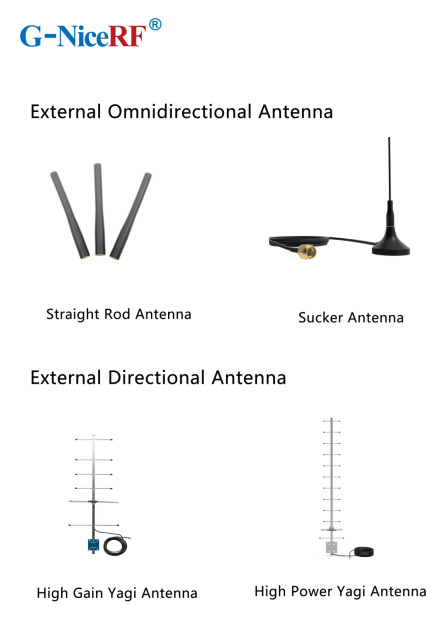
What are the main types of antennas?
External Antennas: These antennas can be classified into omnidirectional antennas and directional antennas based on the radiation pattern.
Internal Antennas: These antennas refer to antennas that can be placed inside devices.
Omnidirectional Antennas: These antennas radiate signals uniformly in the horizontal plane, making them suitable for applications that require 360-degree coverage, such as home Wi-Fi routers and mobile devices.
Directional Antennas: These antennas have a high emission and reception strength in one or more specific directions, while the strength is minimal or zero in others. Directional antennas are primarily used to enhance signal strength and improve interference resistance.
PCB Antennas: These antennas are directly printed on the circuit board and are suitable for devices with limited space, commonly used in small wireless modules and IoT devices.
FPC Antennas: FPC antennas are flexible printed circuit antennas that are lightweight, efficient, and easy to integrate.
Concealed Antennas: Designed for aesthetic purposes, concealed antennas can be hidden within devices or disguised as other objects, making them suitable for applications where appearance is important without compromising signal quality.
Antenna Selection Guide
When selecting the appropriate antenna for a communication module, it's essential to first determine whether to use an internal or external antenna based on the module's structure.

External Antennas: These antennas offer high gain, are less affected by the environment, and can save development time, but they may take up space and impact the product's aesthetics.
Internal Antennas: These have relatively high gain and are installed within the device, maintaining a clean and appealing exterior.
Sucker Antennas: These provide high gain and are easy to install and secure.
Copper Rod Sucker Antennas: Made from large-diameter pure copper radiators, these are highly efficient with a wide bandwidth.
Rubber Rod Antennas: Offer moderate gain at a low cost.
Fiberglass Antennas: Suitable for harsh environments and ideal for long-distance signal

External Directional Antennas
Typically used in environments with long communication distances, small signal coverage areas, and high target density.
Panel Antennas have high efficiency, are compact, and easy to install, while considering the impact of gain and radiation area Yagi Antennas offer very high gain, are slightly larger, and have strong directionality, making them suitable for long-distance signal transmission; however, attention must be paid to the antenna's orientation during use
Internal Antenna Selection
Most internal antennas are affected by environmental factors and may require custom design or impedance matching
Spring Antennas are cost-effective but have low gain and narrow bandwidth, often requiring tuning for good matching when installed Ceramic Patch Antennas occupy minimal space and perform well, but have a narrow bandwidth
For details, please click:https://www.nicerf.com/products/ Or click:https://nicerf.en.alibaba.com/productlist.html?spm=a2700.shop_index.88.4.1fec2b006JKUsd For consultation, please contact NiceRF (Email: [email protected]).
2 notes
·
View notes
Text
Beginner's learning to understand Xilinx product series including Zynq-7000, Artix, Virtex, etc.
Xilinx (Xilinx) as the world's leading supplier of programmable logic devices has always been highly regarded for its excellent technology and innovative products. Xilinx has launched many excellent product series, providing a rich variety of choices for different application needs.

I. FPGA Product Series
Xilinx's FPGA products cover multiple series, each with its own characteristics and advantages.
The Spartan series is an entry-level product with low price, power consumption, and small size. It uses a small package and provides an excellent performance-power ratio. It also contains the MicroBlaze™ soft processor and supports DDR3 memory. It is very suitable for industrial, consumer applications, and automotive applications, such as small controllers in industrial automation, simple logic control in consumer electronics, and auxiliary control modules in automotive electronics.
The Artix series, compared to the Spartan series, adds serial transceivers and DSP functions and has a larger logic capacity. It achieves a good balance between cost and performance and is suitable for mid-to-low-end applications with slightly more complex logic, such as software-defined radios, machine vision, low-end wireless backhaul, and embedded systems that are cost-sensitive but require certain performance.
The Kintex series is a mid-range series that performs excellently in terms of the number of hard cores and logic capacity. It achieves an excellent cost/performance/power consumption balance for designs at the 28nm node, provides a high DSP rate, cost-effective packaging, and supports mainstream standards such as PCIe® Gen3 and 10 Gigabit Ethernet. It is suitable for application scenarios such as data centers, network communications, 3G/4G wireless communications, flat panel displays, and video transmission.
The Virtex series, as a high-end series, has the highest performance and reliability. It has a large number of logic units, high-bandwidth serial transceivers, strong DSP processing capabilities, and rich storage resources, and can handle complex calculations and data streams. It is often used in application fields with extremely high performance requirements such as 10G to 100G networking, portable radars, ASIC prototyping, high-end military communications, and high-speed signal processing.

II. Zynq Product Series
The Zynq - 7000 series integrates ARM and FPGA programmable logic to achieve software and hardware co-design. It provides different models with different logic resources, storage capacities, and interface numbers to meet different application needs. The low-power consumption characteristic is suitable for embedded application scenarios such as industrial automation, communication equipment, medical equipment, and automotive electronics.
The Zynq UltraScale + MPSoC series has higher performance and more abundant functions, including more processor cores, larger storage capacities, and higher communication bandwidths. It supports multiple security functions and is suitable for applications with high security requirements. It can be used in fields such as artificial intelligence and machine learning, data center acceleration, aerospace and defense, and high-end video processing.
The Zynq UltraScale + RFSoC series is similar in architecture to the MPSoC and also has ARM and FPGA parts. However, it has been optimized and enhanced in radio frequency signal processing and integrates a large number of radio frequency-related modules and functions such as ADC and DAC, which can directly collect and process radio frequency signals, greatly simplifying the design complexity of radio frequency systems. It is mainly applied in radio frequency-related fields such as 5G communication base stations, software-defined radios, and phased array radars.

III. Versal Series
The Versal series is Xilinx's adaptive computing acceleration platform (ACAP) product series.
The Versal Prime series is aimed at a wide range of application fields and provides high-performance computing and flexible programmability. It has high application value in fields such as artificial intelligence, machine learning, data centers, and communications, and can meet application scenarios with high requirements for computing performance and flexibility.
The Versal AI Core series focuses on artificial intelligence and machine learning applications and has powerful AI processing capabilities. It integrates a large number of AI engines and hardware accelerators and can efficiently process various AI algorithms and models, providing powerful computing support for artificial intelligence applications.
The Versal AI Edge series is designed for edge computing and terminal device applications and has the characteristics of low power consumption, small size, and high computing density. It is suitable for edge computing scenarios such as autonomous driving, intelligent security, and industrial automation, and can achieve efficient AI inference and real-time data processing on edge devices.
In short, Xilinx's product series are rich and diverse, covering various application needs from entry-level to high-end. Whether in the FPGA, Zynq, or Versal series, you can find solutions suitable for different application scenarios, making important contributions to promoting the development and innovation of technology.
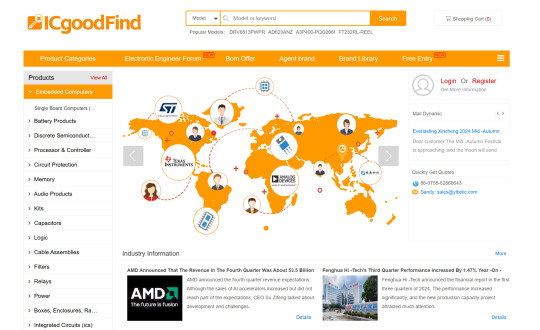
In terms of electronic component procurement, Yibeiic and ICgoodFind are your reliable choices. Yibeiic provides a rich variety of Xilinx products and other types of electronic components. Yibeiic has a professional service team and efficient logistics and distribution to ensure that you can obtain the required products in a timely manner. ICgoodFind is also committed to providing customers with high-quality electronic component procurement services. ICgoodFind has won the trust of many customers with its extensive product inventory and good customer reputation. Whether you are looking for Xilinx's FPGA, Zynq, or Versal series products, or electronic components of other brands, Yibeiic and ICgoodFind can meet your needs.
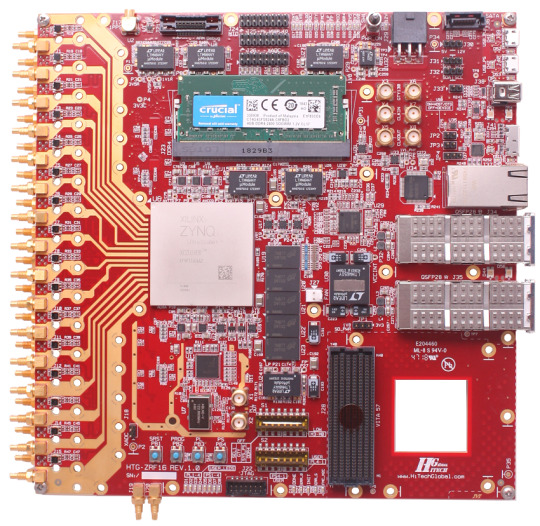
Summary by Yibeiic and ICgoodFind: Xilinx (Xilinx) as an important enterprise in the field of programmable logic devices, its products have wide applications in the electronics industry. As an electronic component supplier, Yibeiic (ICgoodFind) will continue to pay attention to industry trends and provide customers with high-quality Xilinx products and other electronic components. At the same time, we also expect Xilinx to continuously innovate and bring more surprises to the development of the electronics industry. In the process of electronic component procurement, Yibeiic and ICgoodFind will continue to provide customers with professional and efficient services as always.

4 notes
·
View notes
Text
Impact of Digital Signal Processing in Electrical Engineering - Arya College
Arya College of Engineering & I.T is the best college of Jaipur, Digital SignalProcessing (DSP) has become a cornerstone of modern electrical engineering, influenced a wide range of applications and driven significant technological advancements. This comprehensive overview will explore the impact of DSP in electrical engineering, highlighting its applications, benefits, and emerging trends.
Understanding Digital Signal Processing
Definition and Fundamentals
Digital Signal Processing involves the manipulation of signals that have been converted into a digital format. This process typically includes sampling, quantization, and various mathematical operations to analyze and modify the signals. The primary goal of DSP is to enhance the quality and functionality of signals, making them more suitable for various applications.
Key components of DSP include:
Analog-to-Digital Conversion (ADC): This process converts analog signals into digital form, allowing for digital manipulation.
Digital Filters: These algorithms are used to enhance or suppress certain aspects of a signal, such as noise reduction or frequency shaping.
Fourier Transform: A mathematical technique that transforms signals from the time domain to the frequency domain, enabling frequency analysis.
Importance of DSP in Electrical Engineering
DSP has revolutionized the way engineers approach signal processing, offering numerous advantages over traditional analog methods:
Precision and Accuracy: Digital systems can achieve higher precision and reduce errors through error detection and correction algorithms.
Flexibility: DSP systems can be easily reprogrammed or updated to accommodate new requirements or improvements, making them adaptable to changing technologies.
Complex Processing Capabilities: Digital processors can perform complex mathematical operations that are difficult to achieve with analog systems, enabling advanced applications such as real-time image processing and speech recognition.
Applications of Digital Signal Processing
The versatility of DSP has led to its adoption across various fields within electrical engineering and beyond:
1. Audio and Speech Processing
DSP is extensively used in audio applications, including:
Audio Compression: Techniques like MP3 and AAC reduce file sizes while preserving sound quality, making audio files easier to store and transmit.
Speech Recognition: DSP algorithms are crucial for converting spoken language into text, enabling voice-activated assistants and transcription services.
2. Image and Video Processing
In the realm of visual media, DSP techniques enhance the quality and efficiency of image and video data:
Digital Image Processing: Applications include noise reduction, image enhancement, and feature extraction, which are essential for fields such as medical imaging and remote sensing.
Video Compression: Standards like H.264 and HEVC enable efficient storage and streaming of high-definition video content.
3. Telecommunications
DSP plays a vital role in modern communication systems:
Modulation and Demodulation: DSP techniques are used in encoding and decoding signals for transmission over various media, including wireless and optical networks.
Error Correction: Algorithms such as Reed-Solomon and Turbo codes enhance data integrity during transmission, ensuring reliable communication.
4. Radar and Sonar Systems
DSP is fundamental in radar and sonar applications, where it is used for:
Object Detection: DSP processes signals to identify and track objects, crucial for air traffic control and maritime navigation.
Environmental Monitoring: Sonar systems utilize DSP to analyze underwater acoustics for applications in marine biology and oceanography.
5. Biomedical Engineering
In healthcare, DSP enhances diagnostic and therapeutic technologies:
Medical Imaging: Techniques such as MRI and CT scans rely on DSP for image reconstruction and analysis, improving diagnostic accuracy.
Wearable Health Monitoring: Devices that track physiological signals (e.g., heart rate, glucose levels) use DSP to process and interpret data in real time.
Trends in Digital Signal Processing
As technology evolves, several trends are shaping the future of DSP:
1. Integration with Artificial Intelligence
The convergence of DSP and AI is leading to smarter systems capable of learning and adapting to user needs. Machine learning algorithms can enhance traditional DSP techniques, enabling more sophisticated applications in areas like autonomous vehicles and smart home devices.
2. Increased Use of FPGAs and ASICs
Field-Programmable Gate Arrays (FPGAs) and Application-Specific Integrated Circuits (ASICs) are increasingly used for implementing DSP algorithms. These technologies offer high performance and efficiency, making them suitable for real-time processing in demanding applications such as telecommunications and multimedia.
3. Internet of Things (IoT)
The proliferation of IoT devices is driving demand for efficient DSP solutions that can process data locally. This trend emphasizes the need for low-power, high-performance DSP algorithms that can operate on resource-constrained devices.
4. Cloud-Based DSP
Cloud computing is transforming how DSP is implemented, allowing for scalable processing power and storage. This shift enables complex signal processing tasks to be performed remotely, facilitating real-time analysis and data sharing across devices.
Conclusion
Digital Signal Processing has significantly impacted electrical engineering, enhancing the quality and functionality of signals across various applications. Its versatility and adaptability make it a critical component of modern technology, driving innovations in audio, image processing, telecommunications, and biomedical fields. As DSP continues to evolve, emerging trends such as AI integration, IoT, and cloud computing will further expand its capabilities and applications, ensuring that it remains at the forefront of technological advancement. The ongoing development of DSP technologies promises to enhance our ability to process and utilize information in increasingly sophisticated ways, shaping the future of engineering and technology.
3 notes
·
View notes